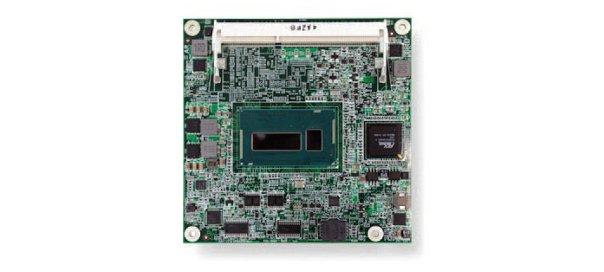ARBOR Technology is expanding its successful line of modules with the introduction of a 5th generation Intel®CoreTM processor platform, the EmETXe-i88U0, a Type 6 Compact module. The single-chip processors feature a low power consumption of just 15W TDP.
Built on Intel’s new 14nm process technology, the 5th generation Intel®CoreTM processor is designed to provide excellent graphics and performance. Supporting the next generation of ARBOR’s COM Express modules is the PBC-900J carrier board for Internet of Things (IoT) solutions, which also maintains compatibility with previous generations.
New Intel® HD Graphics 5500 and 6000 delivers stunning and responsive visuals in 5th generation Intel® CoreTM processors, including Ultra HD 4k display and additional codec support. Enhanced security and manageability features help to drive down total cost and risk, protecting data and preventing malware threats.
Embedded computers allow the connection of up to three independent display interfaces via HDMI 1.4, LVDS and embedded DisplayPort (eDP). When using DisplayPort 1.2, the individual displays can be daisy chained to take advantage of simple wiring. Native USB 3.0 support provides fast data transmission with low power consumption. The one SODIMM socket can be equipped with up to 8GB SODIMM DDR3L memory.
The strength of the EmETXe-i88U0 lies in the flexibility and customization for the application. A total of eight USB ports are provided, four of them support USB 3.0 SuperSpeed. Eight PCI Express 2.0 lanes, three SATA ports with up to 6 Gb/s, RAID support and a Intel®i218LM PCIe Gbe PHY support Intel®Active Management Technology 10.0 (Intel® AMT 10) to enable fast and flexible system extensions, complete the highly flexible design.
ARBOR Technology Corp:
ARBOR Technology Corp., is a leading embedded computing manufacturer with headquarters in Taipei since 1993. The company offers large variety of products from embedded boards to complete systems as panel PC, box PC and tablet PC. For several years ARBOR also invest R&D in medical computing to optimize healthcare services.

